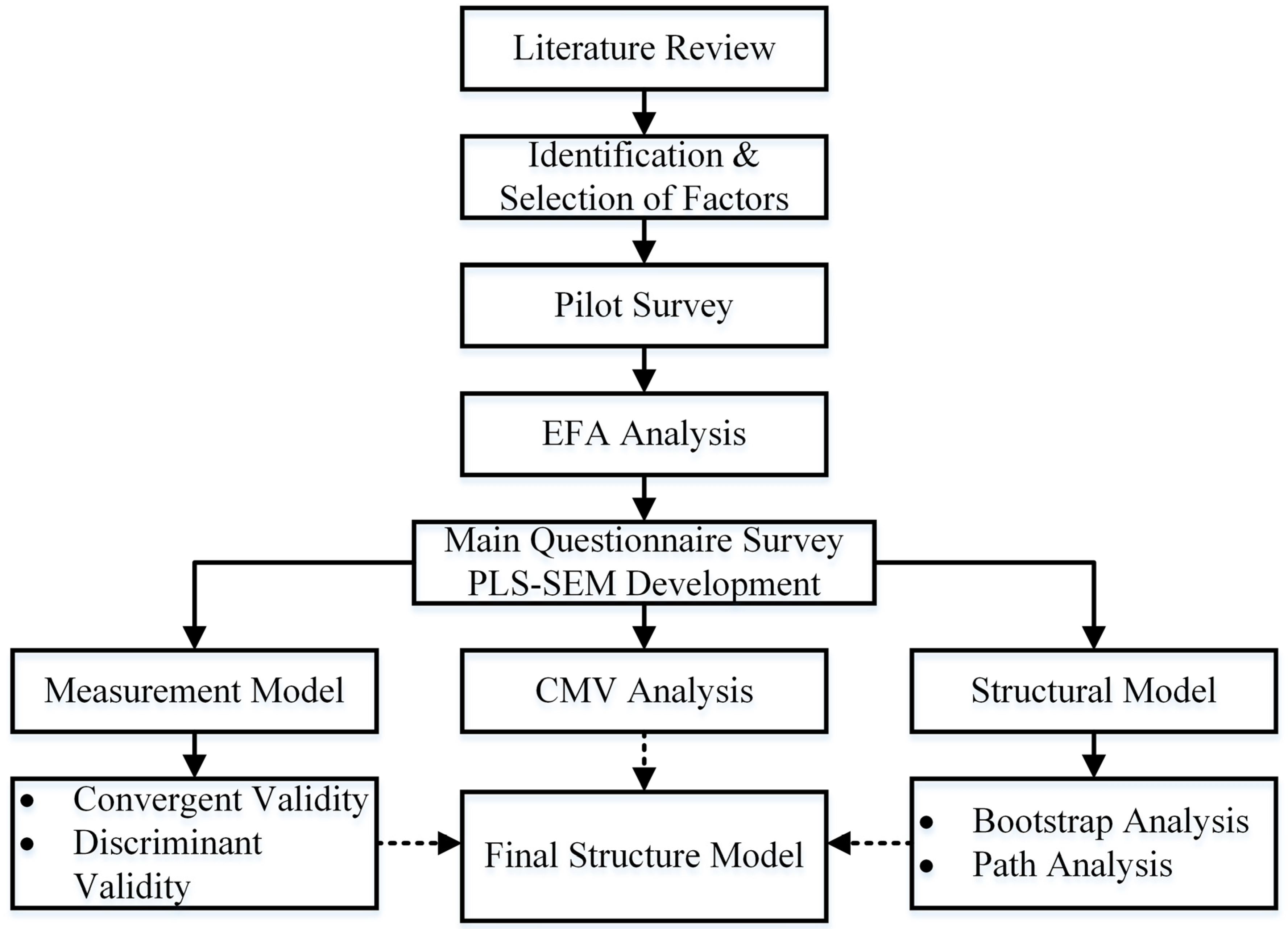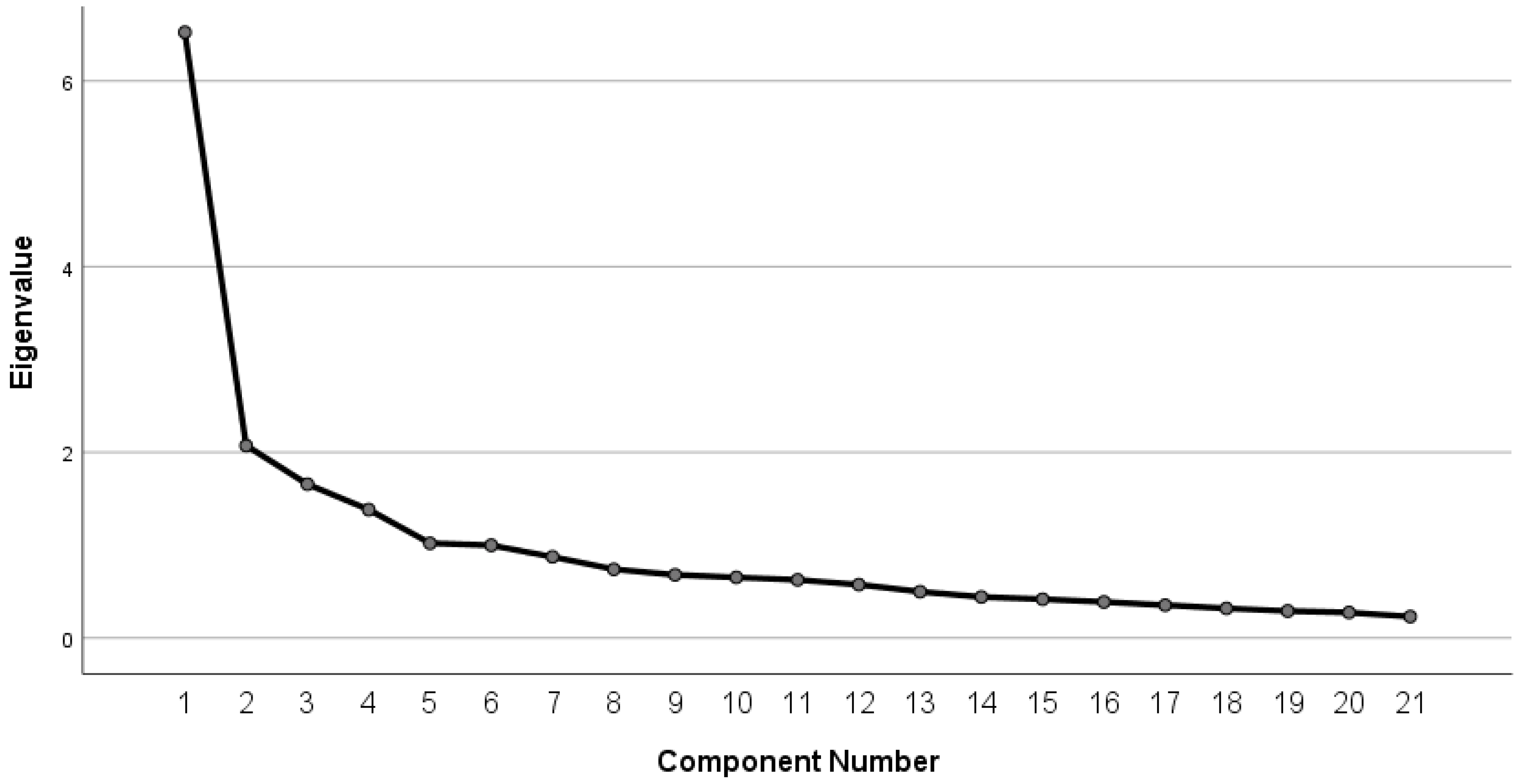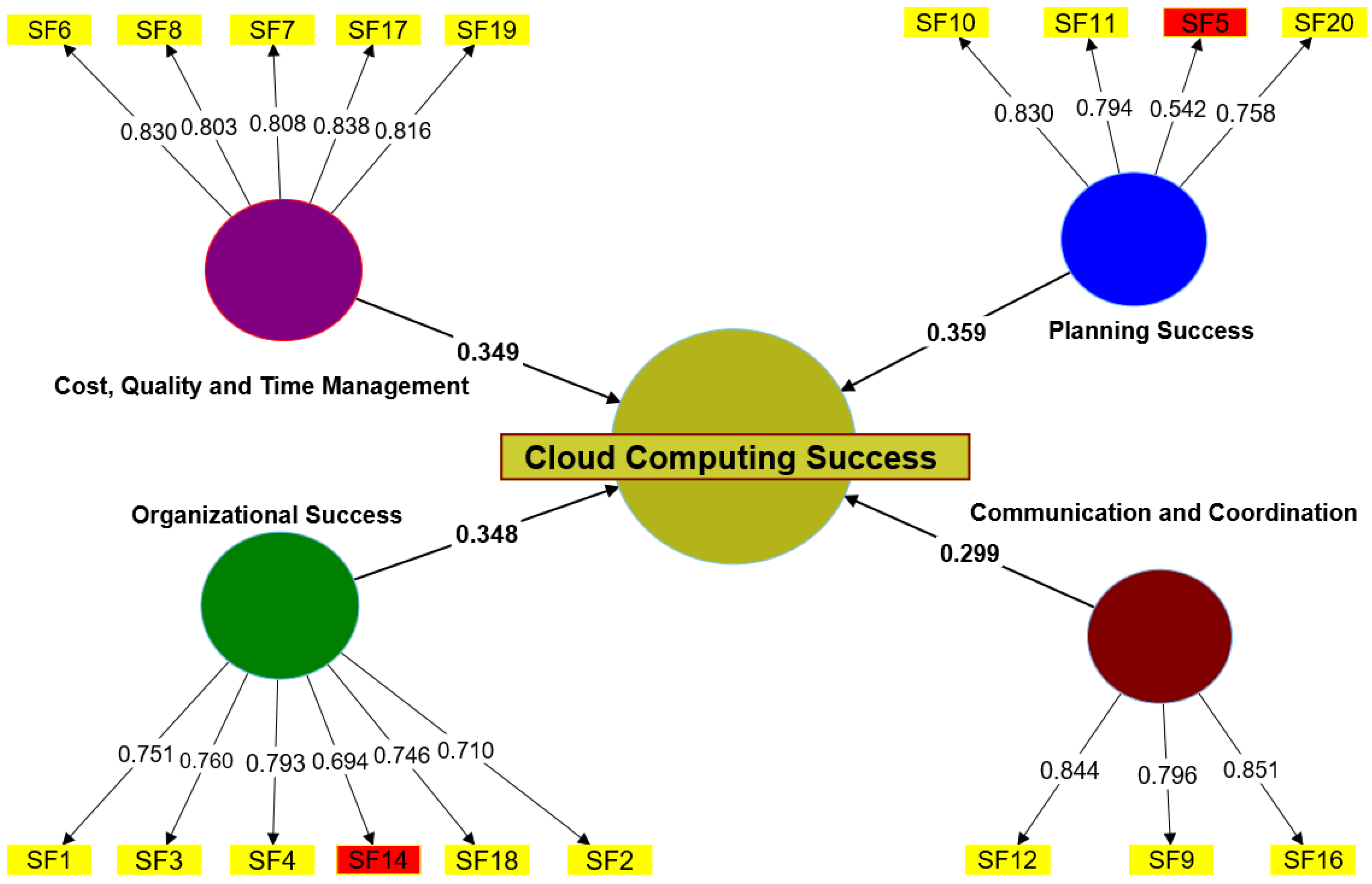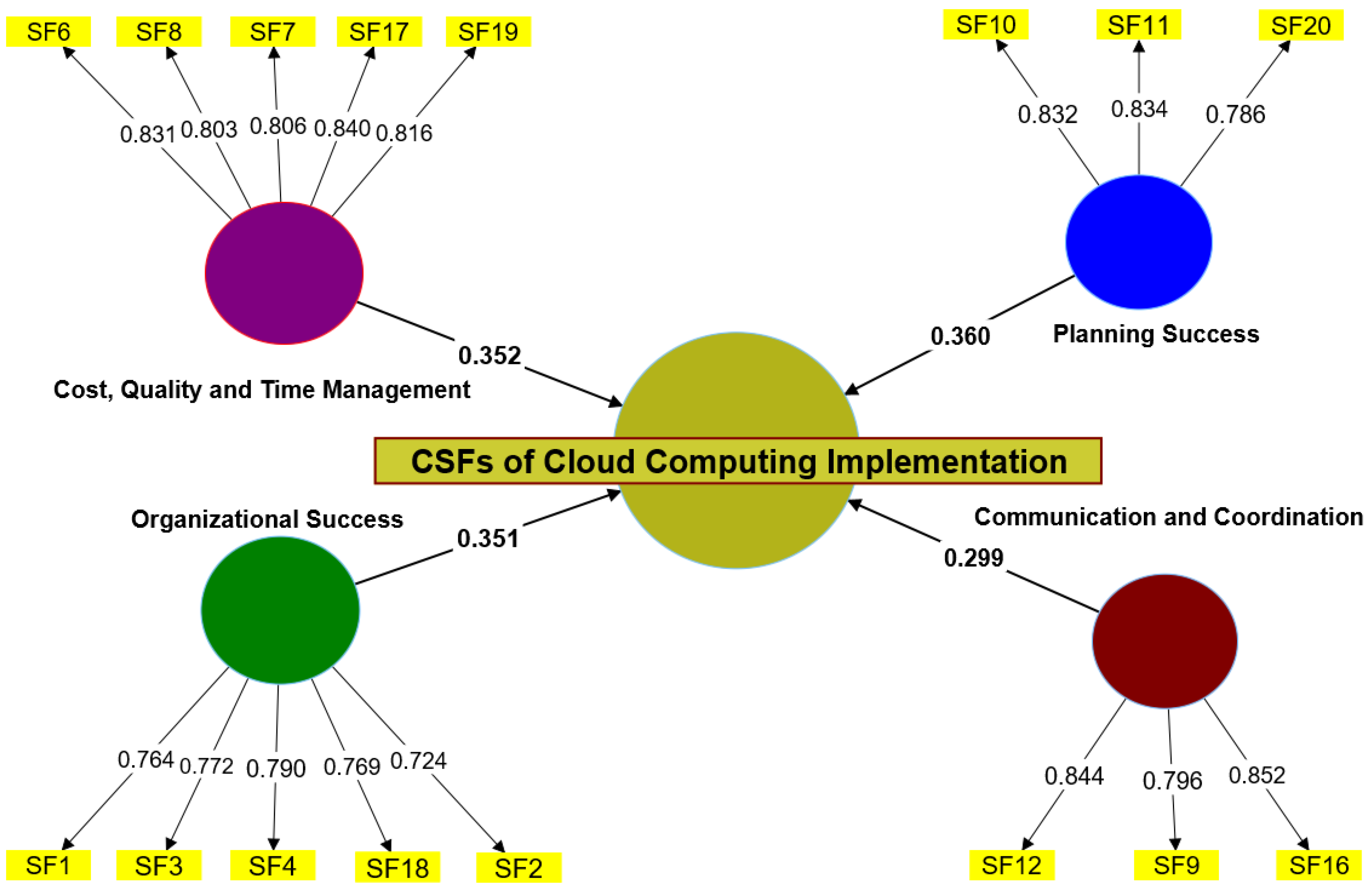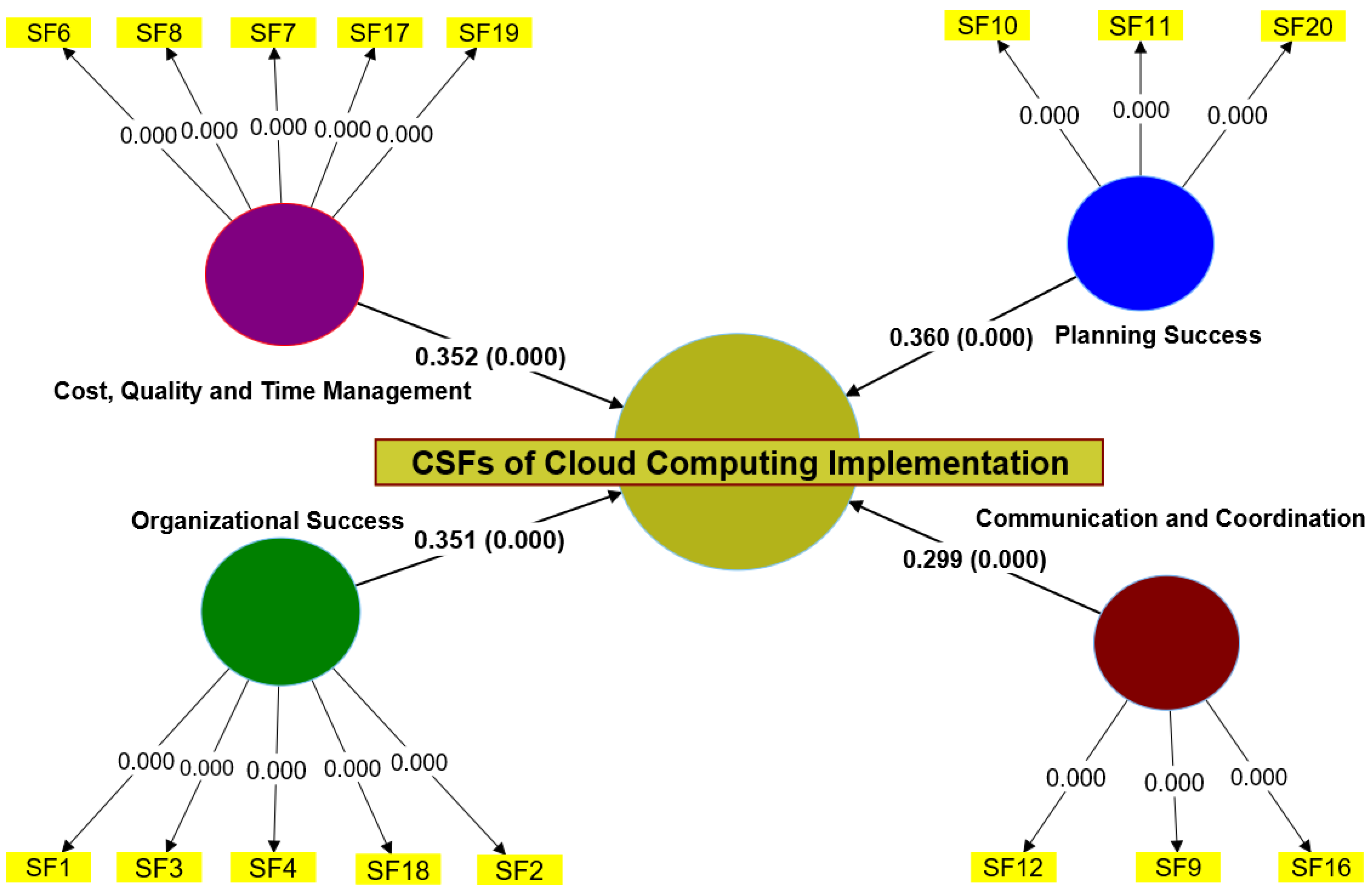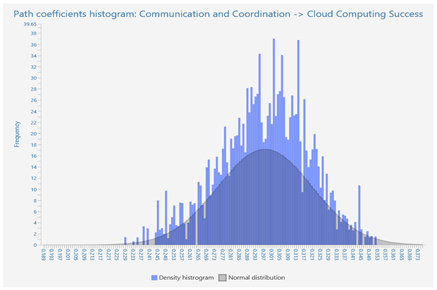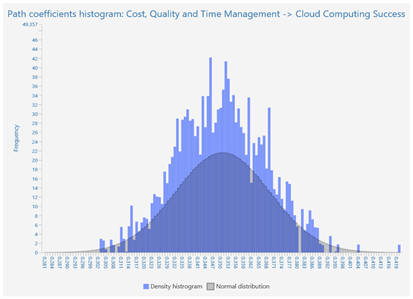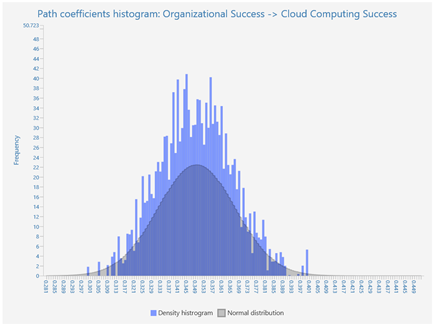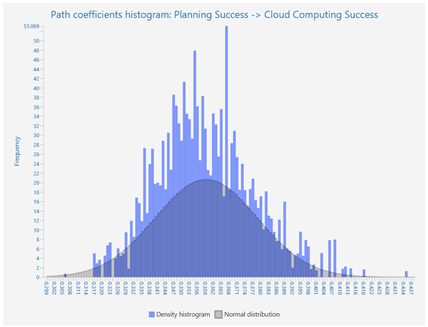1. Introduction
The industry of building is both complicated and dynamic. Projects relevant to the building industry include many interdependent activities and components that substantially impact social, environmental, and community-relevant factors throughout their life cycle. More than 40% of universal electricity production and 30% of emissions of total Greenhouse Gas (GHG) in emerging and wealthy nations are attributable to building projects. Approximately forty percent of the entire strength and resources of Europe and the United States are used for building [
1]. In underdeveloped nations, the sustainability of projects in the building industry is very worrying. There is little doubt that the building sector is crucial in guaranteeing basic living standards in these rapidly developing nations [
2]. The data-intensive, highly decentralized, and project-based market nature of the building industry, along with extensive data interchange and processing needs throughout the life cycle of its products, is dependent on several experts and organizations (primarily buildings) [
3]. The designing process, building operations, and overall reconstructing process encompass conventional disciplines (architectural, electrical, mechanical, and structural engineering) and several current occupations in topics such as environmental-related science and the study of managing waste. Most vocations have stringent sharing requirements of data [
4,
5].
The building sector demands the sufficient storage and exchange of information amongst specialists. Allen et al. and Altohami et al. stated that communication and cooperation might be achieved by using information control systems, such as the advent of cloud computing. Structured information communication helps the convergence of several project stages [
6,
7]. Zuccaro et al. and Zou et al. found that using a shared Internet connection or shared databases may also add to the success of information sharing [
8,
9]. As a result of the exponential growth of technology, information technology (IT) products and services are accessible worldwide every day [
10,
11]. Bosch-Sijtsema et al. and CAPM and Eng stated that this phenomenon pressures building managers to develop, implement, and integrate new technical techniques to accommodate these changes [
12,
13].
Cloud-based data centers’ high-performance production processing capability is facilitated through the analysis of enormous amounts of IoT data to give actionable insights. Consequently, Casini and Chen et al. stated that while considering the methods that may be employed to aid in this circumstance, we must examine the advancements and the effect of cloud computing on the building sector [
14,
15]. Consequently, strategies should be developed for executing the sustainable growth concept and the development of “sustainable building” via the reduction in fragmented data, where data’s use is crucial for the execution of all building projects [
16,
17]. Sustainability may fulfil present demands without compromising future generations’ potential. Dantas Filho et al. and Ding et al. stated that sustainable building is implementing a sustainable environment with ecological values and efficient energy use [
18,
19]. Getuli et al. and Goh et al. found that it is also explained as a starting phase before and after the departure of the building company [
20,
21]. The building industry should be revolutionized by building innovative and sustainable processes. Fang et al., Garyaev and Garyaeva, and Gavali and Halder stated that to monitor the success of a building project, it is highly recommended that sustainable activities be included from the beginning [
22,
23,
24].
According to Kochovski et al. and Konikov and Garyaev, giving global remote access to services that compute using web-based information and communication technology (ICT) approaches is how cloud computing may achieve this intended building resilience [
25,
26]. Cloud computing is now ready to transform internationally, adopting sustainable business practices as a multidimensional strategy for sustainable management, with cost-effectiveness and economics serving as indicators of success for various building projects because of the platform’s inherent pay-per-use, sustainability, and availability. Multiple users concurrently use shared server networks to access computing services [
27,
28]. It provides high-performance computing resources to evaluate large volumes of IoT (Internet of Things) data to provide decision-making-enhancing information. According to Lilis and Kayal and Liu and Tian, cloud computing is a relatively new phenomenon that allows SMBs to address various sustainability issues, such as cost-effectiveness and risk management. It only buys the resources it needs and treats services like a commodity [
29,
30].
The majority of platforms relevant to cloud computing are suppliers of shared resources. Application administration, measurement content delivery, and preservation costs have been dramatically lowered because servers no longer need to sit idle for extended periods [
31,
32]. Although past studies have explored cloud computing advantages, more effort has yet to be performed to evaluate the usage of cloud computing in the emerging world’s building industry nations. Mandičák et al. and Merschbrock and Munkvold found minimal and exhaustive academic research on using cloud computing in the building sector [
33,
34]. Work has been carried out on cloud computing strategies of implementation and relevant confidence models. Security becomes more critical when cloud computing is considered. This includes cost-effectiveness, protection and safety, assistance, interoperability, and enforcement. Mukhopadhyay et al. and Mutis and Mehraj stated that, typically, these regulations only apply to the organization [
35,
36]. Customers have encountered the same challenges, such as with on-site devices and apps. Consumers are now told that data that they own, software, and computing skills will no longer be within their control. According to Nguyen et al. and Noaman and Mohammed, it is suggested that there is a correlation between the deployment of cloud computing and building projects [
37,
38].
Consequently, our study contributes to the studies on CC as a flourishing research field by investigating the appropriate tools and methodologies for its application in the Malaysian small building sector. Therefore, the overall study question is, “Describe the essential ingredients for utilizing CC in minor building projects in Malaysia or the critical factors relating to the success of CC in little building projects in Malaysia”. Consequently, this research aims to analyze CC-building technologies in Malaysia. In pursuing CC implementation, stakeholders in feasible building plans will find this helpful article. This research’s outcomes will influence how building projects are executed in Malaysia and other developing countries. The following sections consist of an overview of the relevant research material, accompanied by the application of the research technique. The findings were explained and examined from the perspective of prior research. Important data and suitable recommendations are presented in conclusion. This research might be valuable for stakeholders in sustainable building projects seeking to integrate cloud computing. The results might influence the scope of building projects in underdeveloped countries such as Nigeria and Kenya, where comparable projects have been carried out.
This article discusses the importance of cloud computing in the building industry, its advantages in promoting sustainable building practices, and the need for its implementation in emerging nations. However, there is a lack of extensive academic research on using cloud computing in the building industry, especially in Malaysia. Further research is needed to evaluate the usage of cloud computing in the building sector and develop strategies for its implementation. Additionally, more effort is needed to evaluate the advantages of cloud computing in the building industry and develop relevant confidence models. Finally, research is needed to investigate the correlation between the deployment of cloud computing and building projects.
The introductory section presents a comprehensive perspective on the construction sector, emphasizing the interconnected operations and constituents that impact social, ecological, and communal aspects. The sector’s significant requirements for data exchange and processing render it reliant upon multiple experts and organizations. The research subsequently explores the significance of information control mechanisms, such as cloud computing, in augmenting communication and collaboration among experts. The primary objective of the paper is to examine the influence of implementing cloud computing on the small construction sector, with a particular emphasis on promoting smart development. According to the research findings, the implementation of cloud computing has the potential to revolutionize the construction sector by facilitating the adoption of sustainable business practices, enhancing cost-effectiveness, and promoting economic growth as key performance indicators. Nonetheless, this underscores the necessity for strong security and implementation strategies to guarantee the safeguarding of data and confidentiality. This research contributes to the expanding body of literature on cloud computing within the construction industry, particularly in less developed nations, where a more comprehensive assessment of its advantages is required.
2. Related Literature
Multiple research projects have identified smart development difficulties. Transforming corporate sustainability objectives and initiative strategies takes time and effort. According to Noteboom et al. and Núñez et al., it is necessary to balance factors affecting society, the economy, and the environment and their overall sustainability in smart development [
39,
40]. The development of building industry sustainability has prompted a search for practical methods to incorporate this concept into existing work settings. Oke et al. and Peng stated that key strategic stages might also be influenced by the need to develop the environment and an aspirational morality of social responsibility for businesses adopted by all organizations [
41,
42]. According to Oke et al. and Petri, Beach et al., in comparison to conventional methods and procedures, the use of cloud computing to perform construction projects could lead to the development of sustainable construction stakeholders who are more cooperative, more unified, and more capable of working together efficiently [
42,
43]. The building stakeholders can carry out the real-time storage and assessment of data development by using cloud-based technology.
Several investigations have suggested that there may have been a rise due to the use of portable devices such as computers, cell phones, and virtual assistants, which can increase the capability for gathering real-time information from the field. This is evident by monitoring a project’s sustainable development program, performed by the designed mobile applications [
44,
45]. According to Oke, Kineber, Albukhari et al. and Petri, Rana et al., a feasible construction strategy is importing information to an MS Excel file using the application [
46,
47]. However, Zhang and Li and Zhao et al. found that building employees in an office or any other place may access and use building site materials [
48,
49]. The cloud storage feature of ad hoc self-service is helpful. The adaptability of cloud computing is higher than conventional computer models. In contrast to typical storage methods, Oke, Kineber, Al-Bukhari et al. and Qassim Qwaider stated that people can connect by using technology in an independent environment called cloud computing from any location with network connection [
50,
51].
In addition, medium- and small-sized businesses may focus mostly on primary money-making and feasible operations and new methods thanks to cloud computing. Oke, Farouk Kineber, Abdel-Tawab et al. and Ryu et al. stated that by creating an effective business model, businesses must achieve their efficacy in enhancing their company’s worth over a long period [
52,
53]. All corporate resources, such as work and time, formerly allocated to the IT department may now be allocated to other crucial business areas. For medium and small-sized firms, the core businesses of which are not IT, it is optional to maintain or update their information systems (ISs). Shahzad et al. and St-Pierre et al. stated that their core industry should be concentrated upon to increase their company’s competitiveness and overall performance [
54,
55].
Furthermore, this motivates them to innovate and explore new business methods. Hongchang Sun, Guo et al. and Hongchang Sun, Wang et al. stated that saving resources increases productivity, enhances operating performance and efficiency, and allows organizations to focus on their core businesses rather than non-core activities such as infrastructure administration and upkeep, allowing them achieve their productivity goals [
56,
57].
According to You and Feng and Yu, one of the attractive, long-term advantages is the price structure of cloud computing, in which customers give payments for what they use or buy only [
58,
59]. Using cloud technology reduces investment costs since the user is no longer required to contribute to acquiring IT resources [
60,
61]. According to Petri, Rana et al. and Huaiying Sun et al., the payment for every used model and scalable characteristics of cloud computing provide undeniable benefits to cloud consumers [
46,
62]. For medium- and small-scale enterprises in sub-Saharan Africa, cutting the primary cost of establishing IT services relating to infrastructure and lowering running expenses are crucial issues when using the cloud. The use of cloud computing has led to a drop in the licensing costs that medium- and small-scale enterprises (SMEs) must pay to obtain software from technology providers [
63,
64].
Meanwhile, large data centers are expensive to run since they rely largely on energy, which is notoriously unpredictable in many Asian countries. Crucial to cloud computing is that as per Villefranque et al. and Wang and Chio, the technology is powered by several computers irrespective of readily available hardware utilized for application [
65,
66]. The flexibility of cloud computing exceeds that of older computer architectures. Instead of relying on a central server to store data, cloud computing users can access and use the system from any location with an internet connection.
CSFs are regarded as actions and processes that must be performed to ensure quality control is properly imposed and executed among building industry stakeholders. However, many researchers only focused on identifying cloud computing CSFs used by building parties; more relevant studies on Malaysia need to be conducted. Creating a Malaysian survey of small building industry stakeholders was a transparent way to address this deficiency and close this gap.
Several research studies have identified challenges related to sustainability in the construction sector, leading to a quest for feasible approaches to integrate sustainable development into current work environments. Cloud computing has been suggested as a potential remedy due to its numerous advantages, including its cost-effectiveness, scalability, and ability to provide instantaneous access to data. The effective adoption of cloud computing within the construction sector is contingent upon the identification and resolution of CSFs that are unique to this particular industry.
Table 1 below provides a critical comparison of the pros and cons of approaches evaluated with respect to different parameters of cloud computing implementation in construction.
The implementation of cloud computing in the building industry is contingent upon several factors, such as cultural transformation, investment in IT infrastructure, and the accessibility of network connectivity and energy, despite the manifold advantages it presents. It is imperative to identify and address critical success factors that are unique to the building industry in order to achieve successful implementation. In order to fill the research gap pertaining to CSFs of cloud computing in Malaysia, a survey was conducted among stakeholders in the small building industry. The objective of our study was to offer valuable perspectives on the critical determinants that can facilitate the effective adoption of cloud computing in the small construction sector.
3. Methodology
The approach followed a step-wise process that needed the careful identification and assessment of CC essential success criteria to accomplish the research-identified objective. The following flowchart (
Figure 1) illustrates the complete research methodology employed to develop a conceptual model that reflects CC’s essential success characteristics.
First, a critical literature review was conducted to determine the CSFs for CC use in small construction projects within the context of the Malaysian building sector. CSFs with CC were found and refined via semi-structured discussions with five CC specialists and seven small building project experts in Malaysia. The results from the pilot survey were then subjected to Exploratory Factor Analysis (EFA) and reliance assessments to see if further CSFs could be removed. In conclusion, a questionnaire-based basic survey was carried out. The Confirmatory Factor Analysis (CFA) technique developed a measurement model by executing discriminant and convergent validity to determine the most important CSFs for adapting CC on Malaysian construction industry building projects [
69,
70].
3.1. Structured Literature Collection
Collecting data started with a comprehensive examination of CC CSFs in the existing literature. According to Y. Wang et al. and Wong et al., the major objective was identifying the most important CC CSFs for small building projects [
67,
71]. In addition, the overall technique was designed to identify the most widely accepted CC CSFs identified by earlier researchers, as a critical evaluation of existing studies is crucial to attaining any outcome. Six sources, consisting of Springer, Web of Science (WoS), American Society of Civil Engineers (ASCE), Science Direct, Multidisciplinary Digital Publishing Institute (MDPI), and Scopus, were consulted for information. Using Google Scholar, only papers published between 2011 and 2022 were searched. These databases are reputable sources of academic literature, and therefore, we considered them appropriate for our study. Research articles were found by utilizing a combination of various key words, with the adaptability of the terms tailored to the study’s overall topic [
72,
73]. We searched for CC CSFs described in past research articles but limited our search to small-scale initiatives. Existing articles were searched using all available keyword combinations from the standpoint of CC CSFs.
Table 2 summarizes the collected research and related articles in the databases mentioned earlier.
Multiple keyword iterations enabled us to obtain 1166 items across all databases. Based on their titles, abstracts, and potential obstacles, 179 papers met the inclusion criteria for this study. To discover CC CSFs in small building projects, we reviewed 179 publications thoroughly. The majority of found success variables shared features with eliminated factors. Upon conclusion of the literature analysis, it was concluded that only 31 difficulties were significant while tackling modest building projects in Malaysia.
3.2. Qualitative Analysis (Interview)
An assessment tool for semi-structured qualitative interviews, including CSFs linked to the application of CC in Malaysia’s minor construction projects, was developed. In prior research, a representative sample for a variable semi-structured discussion was reported. Because of the qualitative discussions, the objective remains to compile as much information as possible. However, time also restricts the number of individuals interviewed (Zhang & Li, and Zou et al.).
The smallest sample for questionnaire surveys must be between 10 and 20 [
8,
48]. However, the number of specialists participating in interviews should range from five to fifty. Therefore, 15 specialists from the small building business in Malaysia presently working on building projects were asked to attend [
73,
74]. Interviews were conducted with executives and project managers since the application of CC comes within their purview on any building project [
75,
76]. Due to the absence of three interview subjects, their interviews were conducted online via a conference call, while other interviewees were met in person at their location.
There was complete disagreement among respondents over the CC CSFs, such as insufficient access to resources for making decisions (D1), size of the enterprise (D2), capacity of the business (D3), template structure—essential infrastructure (D4), nature of the business (D5), client’s readiness (D6), availability (D7), performance (D8), perceived usability (D9), privacy (D10), and previous realized cost estimates. Out of 31 CC CSFs, only 21 topics covered in the interview were deemed appropriate for additional research by the specialists.
A thorough content analysis was performed using the descriptive qualitative program NVivo, and respondents’ statements were categorized [
77,
78]. The qualitative approach yielded 21 factors, which were then grouped into four primary categories. These characteristics were then utilized to create the final combined framework, which included the previous studies’ results and qualitative analysis, as shown in
Table 3.
3.3. Quantitative Analysis (Pilot Survey and Main Survey Questionnaire)
The Construction Industry Development Board estimates that there are about 39,158 small building firms in Malaysia, with 80% continuously operating in minor building projects (CIDB). The 21 CC CSFs found via interviews were the subject of a pilot study. Based on 21 CC CSFs, a preliminary questionnaire with closed-ended questions was developed. According to You and Feng and Yu, a minimum sample size of 150 respondents was determined, whereas the number of pilot survey questionnaires issued was 250 [
58,
59]. Respondents were from solely Malaysian-based small building firms. Sixty percent of the 250 distributed pilot surveys met the criterion for validity. For information collected from the questionnaire developed, Exploratory Factor Analysis (EFA) was carried out; EFA examines whether a proposed mix of variables or features is appropriate, as well as the likely fundamental factor structure of a set of variables that have been identified, in exchange for imposing a preconceived structure on data. EFA was an appropriate assessment since the sample size range was 150 to 300, and the number of CC CSFs was determined to be about 21, within the permitted range of 20 to 50 [
67,
79]. In addition, the sample size (160) should have exceeded the sum of the survey’s question count and five respondents (7). (21). As 160 was more than 215 = 105 for this pilot survey questionnaire, the data were qualified for EFA analysis. In addition, the Kaiser–Mayer–Olkin (KMO) and Bartlett’s Tests were used to evaluate the sample’s consistency and representation, respectively. This test’s index ranges from 0 to 1, and scores over 0.6 are deemed adequate for determining the nature of relations among variables. A
p-value lower than 0.05 is acceptable for Bartlett’s Test, which examines data roundness using component assessment. SPSS 24.0 was utilized for the EFA, KMO, and Bartlett’s Test.
The minimal sample size for the primary quantitative survey analysis of the questionnaire was 100, while the determined sample size was 230. In total, 18 CC CSFs participated in the preliminary questionnaire study conducted via EFA. To effectively analyze the frequency of replies, demographic information was also gathered. The survey questionnaire was delivered to 500 Malaysian contractor firms carrying out minor building projects. The SEM was conducted for analytic objectives. In the 1980s, SEM was developed to assess hypotheses on the relationships between latent variables and observable data. The measuring framework or model is the initial model in SEM. It employs CFA to expand the model by assessing the accuracy and the dependability of measuring variables compared to established standards, connecting the concepts to the latent elements. By calculating variances, assessing hypotheses, and implementing necessary model modifications, the second structural model assesses the relationships among latent elements. The prototype model may be improved until it can be used to verify the theory by substituting the anticipated causal linkages for the relationship among the element relationships. This study created a theoretical basis for SEM assessment utilizing EFA analysis’s conclusions on priorly observed CSFs to CC obtained from the above research review.
Regarding the use of EFA and CFA in the analysis of the quantitative datasets, we used these statistical techniques to reduce the dimensionality of the data and to test the validity and reliability of our research instrument. The EFA was used to identify the underlying factors that contributed to the successful implementation of cloud computing in the Malaysian construction sector, while the CFA was used to confirm the factor structure identified via the EFA. We believe that the use of these techniques strengthened the validity and reliability of our research findings.
5. Discussion
The modeling of all success factors related to cloud computing was carried out to ensure that only significant factors were included in the final model, which suited the small building projects in Malaysia. Certain factors in the findings could only be justified by comparison with existing studies. The main aspect of the overall findings was to provide unique aspects of cloud computing success factors that only relate to minor building projects in Malaysia. The following discussion provides a detailed critical review of findings and relevant evidence from existing research that contribute positively to the development of cloud computing in successful small building projects in Malaysia.
From the pilot survey results, the construct with the highest mean was “communication and coordination” (mean = 3.34, position 1). SF12, “ability to better coordinate”, was found to be the main reason for which the highest mean was observed. According to T. Wang et al. and Y. Wang et al., there is evidence that cloud computing significantly improves communication, allowing team members to communicate effectively and coordinate [
60,
71]. The findings follow those of Wong et al. and You and Feng. Still, they indicate that the participants prioritized the communication and coordination outcomes of choosing cloud computing for building projects [
58,
67]. They also relate to the research implications of existing research, where future challenges include communication and coordination in the small building industry. The behavior shows the ability with which successful outcomes can be produced by developing cloud computing for building projects. At the same time, its more critical advantage in terms of coordination is highlighted by participants. This indicates how the overall scenario can be efficiently utilized to show the critical relevancy of cloud computing and the success factor of battle coordination in small building projects in Malaysia.
The lowest mean was observed in the case of the “planning success” construct (mean = 2.85, position = 4). SF20, “process tests”, was found to be the main reason for which the lowest position was observed for the respective construct. According to Yu and Zhang and Li, it is evident that the process test is one of the prominent features of cloud computing. Still, it may only sometimes be useful for building work as it separates the site from the work needed to be completed in an online environment [
48,
59]. According to Zhao et al., certain difficulties are always present in achieving the plan’s success because process tests can only be conducted partially due to the various factors involved in the building industry [
49]. The behavior confirms the construct’s validity in terms of positioning and its significance for the Malaysian building industry. With more implications of cloud computing in the later stages of the project management life cycle adopted in small building projects, participants gave the lowest position to respective constructs. While the planning stage is at any initial level, the cloud computing implications remain limited to documentation work and only translate to further practical work in implementing the design and resolving changes during practical building work. This is the reason why the pilot survey effectively justified the positioning of factors. It is further unique in Malaysia because, in small building projects, more importance is given to the coordination aspect than improving the planning. This can be highly useful in developing the implications of this research when possible outcomes can be constructed for the development of small building projects in Malaysia.
Unique behavior was observed in the case of the exclusion of SF13, “before the project begins, stakeholders understand success criteria”; SF15, “competency of the PM”; and SF21, “adequate resources management” from EFA results after Varimax rotation. According to the latest research, it is evident that stakeholders only sometimes understand success criteria because their demands are very dependent on their requirements and expectations from the project. T. Wang et al. and H. Wang and Du showed that cloud computing cannot provide 100% predictions because it still depends on evolving technologies. Therefore, the stakeholders can only sometimes be sure about the success criteria [
60,
61]. This justifies the exclusion of factor SF13. Similar is the case with the competency of the product management team, as the cloud computing technology is comparatively better but still needs to be advanced to the level at which other technologies cannot provide more benefits. According to Y. Wang et al. and Won et al., it cannot provide effective competency to project management practices in response to small building projects where cloud computing is already difficult to adopt due to its high initial cost [
68,
71]. Further, it is observed that resource management can only partially be controlled with cloud computing as it relates to different factors that depend on supply performance and external market behavior. The procurement of resources can only partially be improved with the help of resource management, and this factor was excluded while justifying its insignificance in Malaysia’s small building projects.
The “cost, quality, and time management” construct (CR = 0.878, CV = 0.911, AVE = 0.671, ρ = 0.000, β = 0.352, VIF = 1.388) involved SF6, “accessibility cost” (loading = 0.831); SF8, “realistic schedule” (loading = 0.803); SF7, “efficient monitoring and control” (loading = 0.806); SF17, “realistic budget” (loading = 0.840); and SF19 “quality control” (loading = 0.816). According to Afolabi et al. and Allahvirdizadeh et al., it is evident that cloud computing ultimately improves accessibility costs and provides a realistic schedule, encompassing the study’s funding [
2,
5]. The case is similar with Allen et al. and Altohami et al., where efficient monitoring and control are found to be critically related to improvements in project success when implementing cloud computing [
6,
7]. The unique behavior is how it is observed in the case of a realistic budget and quality control, where it is effectively only related to small building projects in Malaysia. Cloud computing is expected to do more for Malaysia’s small building projects to maintain a realistic budgeting process and provide better management control. According to Armstrong et al. and Bello et al., this is significant in the sense of making the product successful because ultimately, when the management is more confident about the budget in a small building project, then it will also be easier for them to achieve success and adopt sustainable quality measures [
10,
11]. This can lead to maintaining the competitive advantage while allowing the appropriate impact on the overall project. For this reason, including all the factors in the final structural model is justified.
The “organizational success” construct (CR = 0.822, CV = 0.875, AVE = 0.584, ρ = 0.000, β = 0.351, VIF = 1.376) involved SF1, “internal industrial rivalry exerts pressure” (loading = 0.764); SF4, “eagerness of clients” (loading = 0.790); SF2, “specialized human capital” (loading = 0.724); SF3, “technological advancement” (loading = 0.772); and SF18, “adequate access to decision-making resources” (loading = 0.769). According to Bosch-Sijtsema et al. and CAPM and Eng, it is found that implementing cloud computing may have certain advantages in terms of maintaining internal industrial rivalry control, for which it is identified as a key success factor for organizations involved in small building projects in Malaysia [
12,
13]. In the people management contacts, the research also shows evidence of the eagerness of clients that can effectively contribute to improving the potential success of an organization in small building projects. The need for specialized human capital is also evident in global small building projects, which has similar implications for Malaysian small building projects. The technological advancement is also similar to Qassim Qwaider and St-Pierre et al. It is also justified in developing better outcomes for a project as cloud computing is a relatively new technology for the small building industry [
50,
55]. The unique aspect of this construct is entirely related to the inclusion of a factor that ultimately improves access to decision-making resources with cloud computing, as it is identified as important for cloud computing in small building projects in Malaysia. It can be effectively justified by making appropriate decisions in the project while also contributing to the organization’s success, which is prominently justified in Malaysia’s small building industry.
The “communication and coordination” construct (CR = 0.755, CV = 0.858, AVE = 0.669, ρ = 0.000, β = 0.299, VIF = 1.201) involved SF12, “ability to better coordinate” (loading = 0.844); SF9, “capability to communicate on a variety of levels” (loading = 0.796); and SF16, “collaboration between PM and owners” (loading = 0.852). According to Hongchang Sun, Wang, et al. and N. Sun et al., it is evident that cloud computing can effectively provide communication outcomes at various levels of a project to the management team of small building projects [
56,
63]. It can be effectively related to developing projects in which better communication control can be implemented while maximizing construct validity in the context of Malaysian small building projects. Distinctive features are observed in improving coordination and collaboration between product managers and owners. Because these factors have only been identified in Hongchang Sun, Guo, et al. and Huaiying Sun et al. from the perspective of large-scale building projects, finding them important justifies the scenario in which Malaysia’s building industry is evolving [
57,
62]. Therefore, the possible implications of implementing cloud computing for project success in communication and coordination will ultimately provide leverage for potential business benefits and effective control over the challenges in the working environment of small building projects. This can be attributed entirely to the various aspects of small building projects in Malaysia while also being justified by the study’s findings that small building projects in Malaysia will achieve project success through cloud computing.
The “planning success” (CR = 0.755, CV = 0.870, AVE = 0.690, ρ = 0.000, β = 0.360, VIF = 1.437) construct involved SF10, “fulfilling user specifications” (loading = 0.832); SF11, “correctly defining the project” (loading = 0.834); and SF20, “process tests” (loading = 0.786). According to Hongchang Sun, Wang et al., N. Sun et al. and Y. Wang et al., it has been identified that cloud computing is linked with maximizing user specification fulfilment, and the same indication is given by the construct of planning success [
56,
63,
71]. In response to overall planning success and its possible implication for minor building projects in Malaysia, it is identified that cloud computing contributes to the project’s success from the perspective of user specifications. However, different results are produced in the scenario of correctly defining the project and process test. Its unique aspect can be utilized effectively to develop project outcomes related to the benefit of small building projects in Malaysia. This is why effective planning improvements may be recommended for minor building projects in Malaysia to establish better outcomes. At the same time, it is also related to understanding how it can effectively provide a competitive advantage to small building projects. Overall, there is significant differentiation concerning existing studies, which can contribute to positive implications in theory and practice.
The present study provides a comprehensive comprehension of the fundamental factors that contribute to the efficacious implementation of cloud computing technology in small-scale construction projects. The results offer a conceptual structure that can direct scholars in examining the implementation of cloud computing in additional emerging nations. Furthermore, the theoretical framework can act as a basis for future research endeavors aimed at investigating the protocols and strategies utilized in the implementation of cloud computing in the construction industry. The study offers a roadmap for future research on the development of cloud computing solutions in other areas of construction by identifying the fundamental constructs that are critical to the successful execution of projects.
The study has noteworthy practical implications for stakeholders operating within the construction sector of Malaysia. The results provide guidance for project managers and other interested parties to effectively adopt and execute cloud computing technology. The incorporation of cloud computing technology has the potential to augment project efficacy, refine project strategizing, and elevate communication and coordination amongst team constituents. Moreover, the implementation of cloud computing technology has the potential to promote sustainable development through the enhancement of financial efficiency and output quality, while simultaneously mitigating project irregularities and substandard quality. The adoption of critical success factors, as identified in this study, can enable stakeholders in the construction industry to attain project objectives and facilitate astute development in Malaysia.
